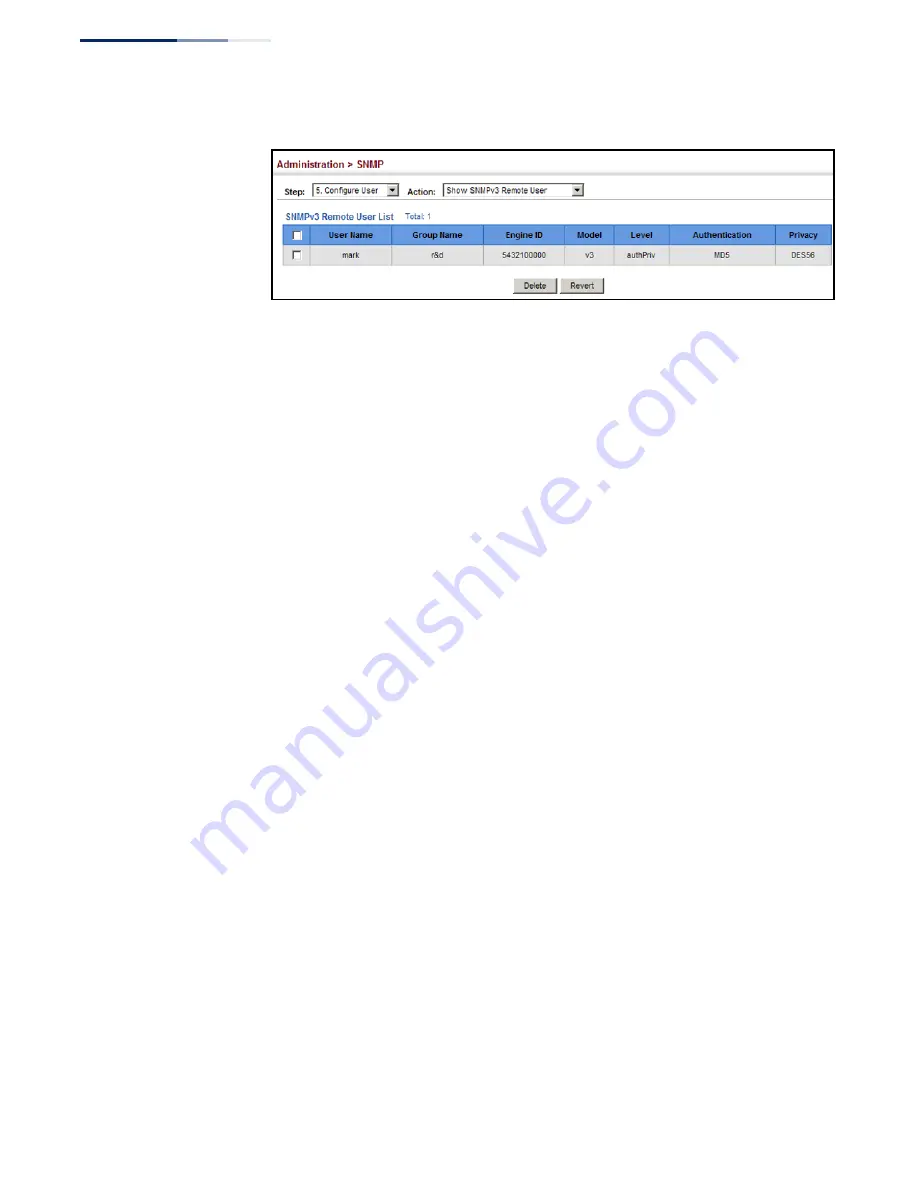
Chapter 13
| Basic Administration Protocols
Simple Network Management Protocol
– 368 –
Figure 234: Showing Remote SNMPv3 Users
Specifying
Trap Managers
Use the Administration > SNMP (Configure Trap) page to specify the host devices to
be sent traps and the types of traps to send. Traps indicating status changes are
issued by the switch to the specified trap managers. You must specify trap
managers so that key events are reported by this switch to your management
station (using network management software). You can specify up to five
management stations that will receive authentication failure messages and other
trap messages from the switch.
Command Usage
◆
Notifications are issued by the switch as trap messages by default. The recipient
of a trap message does not send a response to the switch. Traps are therefore
not as reliable as inform messages, which include a request for
acknowledgement of receipt. Informs can be used to ensure that critical
information is received by the host. However, note that informs consume more
system resources because they must be kept in memory until a response is
received. Informs also add to network traffic. You should consider these effects
when deciding whether to issue notifications as traps or informs.
To send an inform to a SNMPv2c host, complete these steps:
1.
Enable the SNMP agent (
2.
Create a view with the required notification messages (
3.
Configure the group (matching the community string specified on the
Configure Trap - Add page) to include the required notify view (
4.
Enable trap informs as described in the following pages.
To send an inform to a SNMPv3 host, complete these steps:
1.
Enable the SNMP agent (
2.
Create a remote SNMPv3 user to use in the message exchange process
(
). If the user specified in the trap configuration page does not
exist, an SNMPv3 group will be automatically created using the name of the
specified remote user, and default settings for the read, write, and notify
view.
3.
Create a view with the required notification messages (
4.
Create a group that includes the required notify view (
5.
Enable trap informs as described in the following pages.
Summary of Contents for GEL-1061
Page 14: ...Contents 14...
Page 28: ...Section I Getting Started 28...
Page 38: ...Chapter 1 Introduction System Defaults 38...
Page 40: ...Section II Web Configuration 40...
Page 60: ...Chapter 2 Using the Web Interface Navigating the Web Browser Interface 60...
Page 164: ...Chapter 6 Address Table Settings Issuing MAC Address Traps 164...
Page 192: ...Chapter 8 Congestion Control Storm Control 192...
Page 204: ...Chapter 9 Class of Service Layer 3 4 Priority Settings 204...
Page 216: ...Chapter 10 Quality of Service Attaching a Policy Map to a Port 216...
Page 430: ...Chapter 14 Multicast Filtering MLD Snooping Snooping and Query for IPv4 430...
Page 436: ...Chapter 15 IP Tools Address Resolution Protocol 436...
Page 474: ...Section III Appendices 474...
Page 492: ...Glossary 492...
Page 500: ...E052016 ST R02 150200001416A...
















































